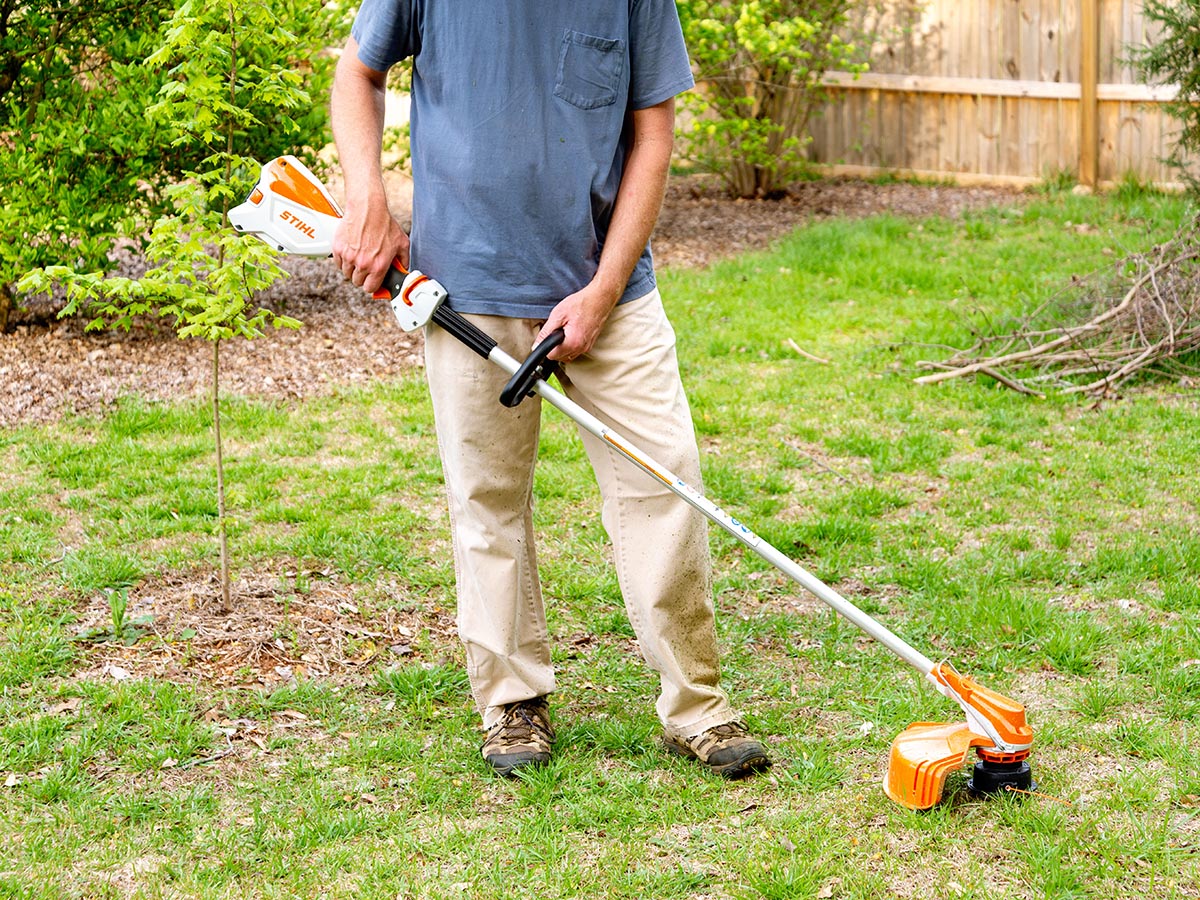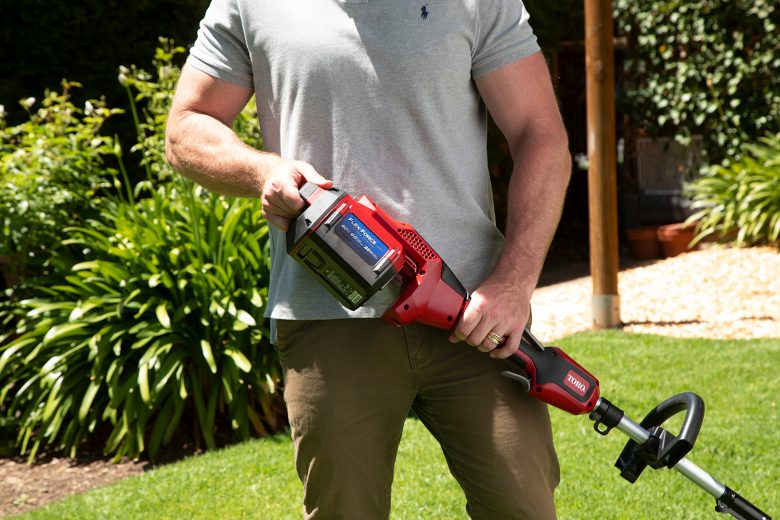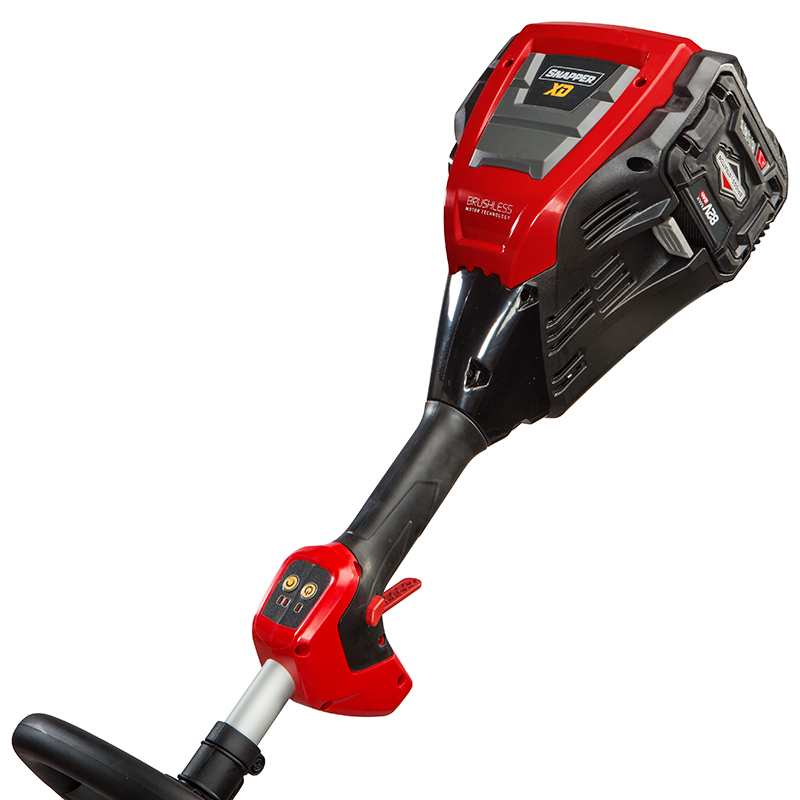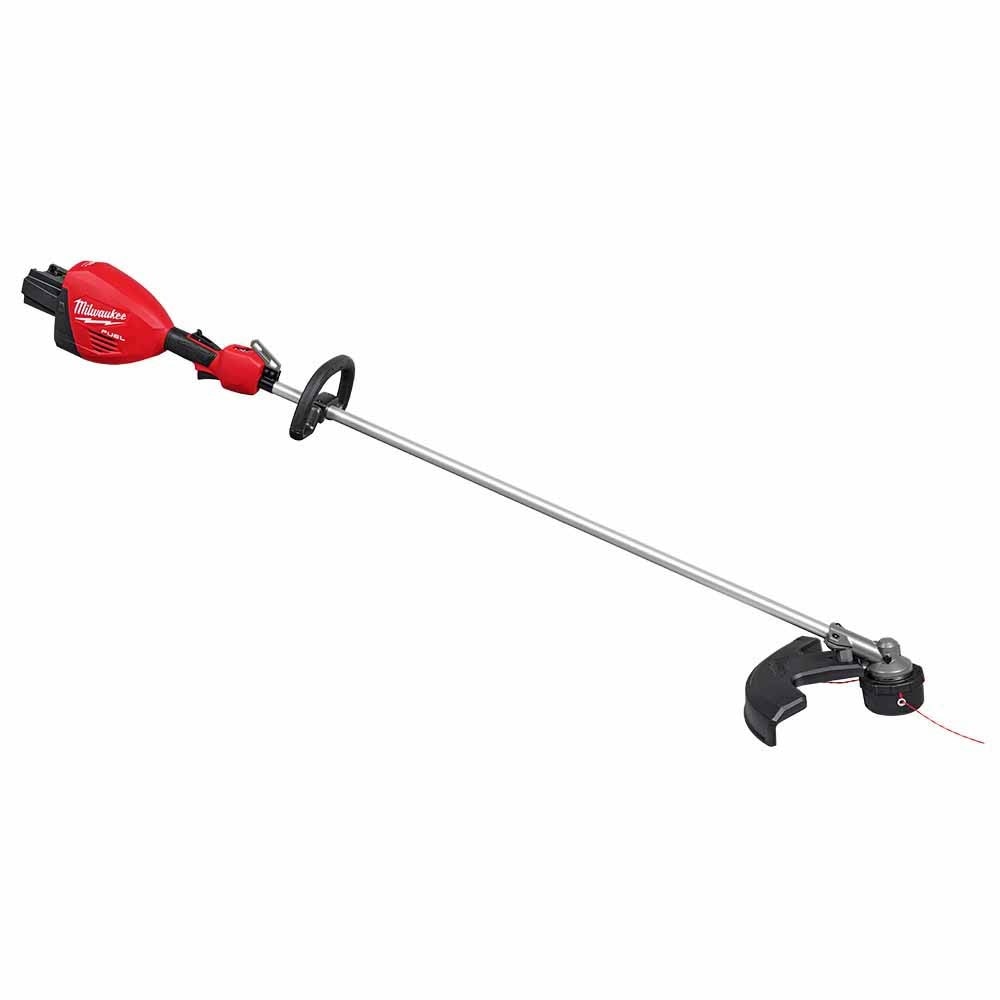Battery String Trimmers – The Future of Lawn Maintenance? Discover Top Picks & Expert Insights
If you’re tired of struggling with noisy, polluting gas trimmers or cumbersome electric cords, then battery string trimmers might be the perfect solution. These innovative tools combine portability, convenience, and performance, making yard work easier and greener than ever before. Whether you’re a homeowner looking for a reliable equipment upgrade or a gardening enthusiast eager for the latest tech, understanding the nuances of battery string trimmers can help you make an informed buying decision. In this comprehensive guide, we’ll explore everything from how they compare to gas models, what features to consider, to the best budget options and lightweight models. Ready to elevate your lawn care game? Let’s dive in!
Introduction to Battery String Trimmers

In recent years, battery string trimmers have gained immense popularity, transforming how homeowners and professional landscapers approach yard maintenance. These devices are powered by rechargeable batteries, eliminating the need for cords or gasoline engines, and offering a quieter, cleaner, and more user-friendly experience. But what exactly makes them stand out, and why should you consider switching from traditional gas or corded electric models? To understand their appeal, we need to look at the core aspects of string trimmers and the rapid advancements in battery technology that have made them more viable for everyday use.
Overview of String Trimmers and Their Uses
String trimmers, also known as weed whackers or weed eaters, are handheld tools designed to cut grass, weeds, and overgrowth along edges, fences, and hard-to-reach areas. Their flexible design allows users to trim lawns with precision, especially in places where larger lawnmowers can’t operate effectively. Typically, these devices feature a rotating filament or blade that cuts through dense grass and weeds efficiently.
The major uses of string trimmers extend beyond simple lawn edging. They are essential for trimming around trees, shrubs, fences, flower beds, and other landscape features. Professional landscapers often rely on heavy-duty models for large areas, but homeowners tend to prefer ergonomic designs that are lightweight and easy to maneuver. Since trimming often involves close contact with delicate plants and tight corners, a device’s ease of use becomes crucial.
The shift towards battery-powered trimmers arises from their ability to handle these tasks with greater convenience. Lightweight, cordless designs enable users to avoid the hassle of cords or fuel, ensuring safety and ease of operation. Moreover, modern battery technology offers impressive runtime and power, making these tools suitable for most residential landscaping needs.
Benefits of Battery-Powered Models
Battery-powered string trimmers come with a host of advantages that have propelled their rapid adoption. Chief among these is their portability—without cords or fuel tanks, they can be used anywhere, regardless of power outlets or gas station proximity. This freedom of movement drastically reduces setup time and increases productivity.
Another significant benefit is their environmental impact. Unlike gas models that release emissions and require oil changes, battery trimmers produce no fumes, making them healthier for users and better for the environment. They also tend to be much quieter, greatly reducing noise pollution—a key consideration for neighbors, especially in urban environments or shared communities.
In terms of maintenance, battery string trimmers require minimal upkeep. No need to change oil, replace spark plugs, or deal with carburetor issues that can plague gas-powered tools. The main maintenance involves taking care of the battery, which, if properly maintained, can last several seasons. Additionally, the compact and lightweight design reduces strain on users, allowing for longer, more efficient trimming sessions without fatigue.
Modern innovations in battery technology have significantly boosted their performance, enabling these tools to rival or surpass gas models in terms of power while maintaining ease of use. Furthermore, with features like variable speed controls, brushless motors, and ergonomic grips, battery trimmers are becoming more sophisticated, catering to a broad spectrum of user needs.
Key Factors to Consider When Choosing a Trimmer
Choosing the right battery string trimmer involves understanding several key factors. These include battery capacity, runtime, weight, ergonomics, and compatibility with existing batteries if you own other cordless equipment. Your specific landscaping needs—such as yard size, overgrowth density, and frequency of use—also influence the decision.
Battery capacity, measured in amp-hours (Ah), directly impacts how long you can work on a single charge. A larger Ah rating typically means longer runtime, but it can also add weight. It’s vital to balance power and portability, especially if you prefer lightweight models for ease of handling. Power output, measured in volts (V), is another critical factor; higher voltage generally correlates with increased cutting power, allowing you to tackle tougher weeds and thicker grass.
Weight and ergonomics are equally essential. Heavier models may offer longer battery life or more power but can lead to fatigue during extended use. Some models incorporate adjustable shafts, comfortable grips, and pivoting heads to ease operation. Compatibility of batteries across different tools can result in cost savings, so if you’re investing in multiple gardening tools, look for models that share batteries.
Finally, consider additional features such as dual-line bump feeds, adjustable handles, vibration reduction, and noise levels. These enhancements can dramatically improve your trimming experience by making it more comfortable, efficient, and enjoyable.
Battery String Trimmers vs Gas Trimmers – Which is Better? Understanding the Trade-offs

One of the most common debates among gardening enthusiasts revolves around choosing battery string trimmers or gas-powered models. Each type has its unique advantages and disadvantages, influenced by performance, cost, environmental impact, and ease of use. As consumers become more environmentally conscious and seek hassle-free tools, battery trimmer vs gas Quora discussions often favor the electric alternative—but is this always the case? To make an informed decision, we need to examine various aspects in detail.
Performance and Power Comparison
The debate over power is at the forefront of battery trimmer vs gas Quora discussions. Gas trimmers traditionally have been regarded as more powerful, especially for tackling dense overgrowth and large areas. They run on internal combustion engines capable of delivering high torque and cutting strength, making them suitable for heavy-duty tasks.
However, advancements in battery technology have narrowed this performance gap. Lithium-ion batteries available today support high voltages and impressive runtime, enabling battery string trimmers to handle most residential tasks effectively. Many models include brushless motors, which provide higher efficiency and power output comparable to gas engines.
For typical homeowner needs like edging, trimming around flower beds, and tackling medium overgrowth, battery string trimmers deliver sufficient power with excellent responsiveness. Light-duty to medium-duty models often outperform expectations, and for infrequent use, they can save you the inconvenience of engine maintenance. That said, professionals or those with large-acreage properties requiring all-day operation may find gas trimmers more reliable due to their sustained power and longer continuous usage.
Maintenance and Operating Costs
Gas trimmers usually involve ongoing costs associated with fuel, oil, spark plug replacements, and carburetor servicing. These maintenance tasks can add up over a season and require mechanical expertise or trips to service centers. On the other hand, battery string trimmers excel in low maintenance, primarily needing battery care and occasional blade or filament replacements.
The initial investment in battery trimmers might be higher, but over time, operating costs tend to be lower. No fuel purchases or tune-ups are necessary, saving money and effort. If you select a model compatible with other battery tools, your investment becomes even more economical.
It’s worth noting that battery lifespan significantly impacts cost considerations. Many batteries last for a few seasons with proper care, and manufacturers often offer replacements. The key to minimizing expenses is choosing high-quality batteries and following battery maintenance tips to extend their longevity.
Environmental Impact and Noise Levels
Environmental sustainability is a critical factor behind the shift towards battery string trimmers. Gas models emit carbon monoxide and other pollutants, contributing to environmental degradation and health hazards, especially when used in poorly ventilated areas.
Battery trimmers produce zero emissions during operation, making them inherently more eco-friendly. Plus, they operate quietly, which benefits not only the user but also neighbors and wildlife. In quiet neighborhoods or shared outdoor spaces, reducing noise pollution is invaluable, and lightweight battery string trimmer Quora users often emphasize how much less disruptive these units are.
From a health perspective, eliminating fumes reduces respiratory irritation and other health concerns associated with prolonged gas engine exposure. The shift to electric options aligns perfectly with sustainable gardening practices and responsible land management.
Ease of Use and Convenience
The convenience offered by battery string trimmers is unmatched, especially for casual and occasional users. No cords to manage, no fuel spills, and easier starting procedures mean less frustration and quicker operation. Many users find battery trimmer vs gas Quora discussions favoring electric models due to their user-friendliness.
Lightweight designs, one-touch start mechanisms, and ergonomic features make battery string trimmers accessible for users of all ages and physical abilities. This ease of use enables older adults, women, or those with physical limitations to perform gardening tasks comfortably and safely.
Moreover, instant power on/off and adjustable features improve productivity and allow for better control during trimming. Pairing these trimmers with GardenTech® battery management systems, which ensure safe operation and optimal battery health, can further simplify maintenance routines and extend tool lifespan.
Cost Differences and Value for Money
Though battery string trimmers generally require a higher upfront investment, their long-term savings and benefits often justify the cost. Gas trimmers have lower initial costs but incur ongoing expenses for fuel, maintenance, and repairs.
When comparing battery trimmer vs gas Quora, many users highlight the excellent value of modern electric models, especially those classified as the Best Cheap Battery String Trimmer options. These models deliver good performance at a fraction of the cost of high-end gas tools, with many offering features suitable for home use.
Investing in a reputable Buyer’s Guide can help identify budget-friendly yet reliable options. Keep in mind that the total cost of ownership considers battery replacements and charger compatibility, which can be mitigated by choosing versatile, higher-capacity batteries compatible with multiple tools.
Selecting the Best Budget-Friendly Battery String Trimmer

Finding an affordable yet efficient battery string trimmer requires a strategic approach. With a plethora of models available, being able to distinguish Top 5 value picks and understanding important features can save you time and money. Whether you’re a first-time buyer or looking to upgrade on a budget, the following insights will help you navigate the options and find the Best Cheap Battery String Trimmer for your needs.
Top Affordable Battery Trimmer Models
Affordable does not necessarily mean low quality. Many brands now offer cost-effective models packed with features suitable for residential use. Some top contenders include:
- Black+Decker LST136W — Known for its lightweight design and decent runtime, making it suitable for small to medium yards.
- Greenworks 21332 — Delivers solid power, good battery life, and a comfortable grip at an attractive price point.
- EGO Power+ ST1502 — Offers professional-level features with a reasonable price tag, perfect for homeowners who want durability without breaking the bank.
- Ryobi RLT1831 — Compact, lightweight, and easy to maneuver, ideal for beginners or those with limited storage space.
- WORX WG163 GT — Versatile and budget-friendly, with adjustable head and shaft length for easier handling.
When shopping for top affordable models, pay close attention to battery capacity, runtime, and included accessories. Reviews from verified users can reveal real-world performance and help you gauge durability.
Features to Look for in a Cost-Effective Trimmer
Even in the budget segment, certain features can elevate a battery string trimmer‘s usability and longevity. Look for models that offer:
- High-capacity batteries (e.g., 2.0 Ah or higher) for longer run time.
- Adjustable shafts for customized comfort and reach.
- Dual-line bump feed for easier line extension.
- Brushless motors—though more common in premium models, some budget options now include them, providing better efficiency and longer motor lifespan.
- Battery compatibility with other tools in your collection to maximize value.
- Quick charger to minimize downtime between uses.
Additionally, ergonomic features such as soft grips, lightweight frames, and balanced weight distribution contribute to user fatigue reduction, especially during extended sessions.
$99.99
$89.00
$125.99
$179.00
$89.00
$81.99
$79.00
$164.65
User Reviews and Ratings Insights
Reading real-user feedback is invaluable when choosing a cheap battery string trimmer. Customers often remark on performance stability, battery life, and ease of use, providing a clearer picture than product descriptions alone. Websites like 24hTrending.com offer curated, unbiased reviews, often highlighting top-rated or Amazon’s Choice models that combine quality and affordability.
Common praises focus on quick startup, quiet operation, and manageable weight. Conversely, downsides include battery life limitations or occasional line feed issues. Keeping these insights in mind can help you select a model that balances cost with essential features.
Tips for Finding the Best Deals and Discounts
Maximize your budget by shopping smart. Keep an eye out for seasonal sales, holiday discounts, and bundled offers that include extra batteries or accessories. Websites like 24hTrending.com publish Buyer’s Guides and deal alerts during peak shopping seasons, allowing you to compare prices across retailers.
Signing up for manufacturer newsletters and following social media channels can also uncover exclusive deals. Additionally, consider purchasing from trusted online retailers with generous return policies, ensuring you can test the trimmer without worries.
Battery Life and Durability of String Trimmers

Battery life and longevity are among the most significant considerations when investing in battery string trimmers. Knowing what to expect in terms of runtime per charge, and how to extend the lifespan of your batteries, is critical for a satisfying ownership experience. This section explores typical operating durations, factors that impact performance, and how to make your equipment last for seasons to come.
Average Runtime Expectations per Charge
The runtime of a battery string trimmer varies based on several factors, including battery capacity, motor efficiency, string size, and user operating style. On average, a fully charged 2.0 Ah battery can support 15 to 30 minutes of continuous trimming for typical residential tasks.
High-capacity batteries, such as 4.0 Ah or higher, can double or even triple this runtime, making them suitable for larger yards or more demanding overgrowth. Some premium models incorporate twice the runtime due to optimized design and power management.
It’s essential to align your yard size with the battery’s capabilities. Small to medium yards (under 1/4 acre) are generally manageable with standard batteries, while extensive properties may require additional batteries or models with longer run times.
Factors Affecting Battery Longevity
Battery longevity depends on multiple factors. Regularly exposing batteries to extreme temperatures—either excessive heat or cold—can accelerate capacity loss. Overcharging or leaving batteries plugged in after full charge also diminishes their lifespan over time.
Using the correct charger, following manufacturer instructions, and avoiding complete discharges can extend your battery’s life. Hardware design elements like thermal management systems, found in high-quality batteries, help in preventing overheating during operation.
Frequent deep cycling (full charges and discharges) may reduce battery life faster than shallow cycling (partial charges). It’s recommended to keep batteries within an optimal charge range for longevity.
How Long Do Battery String Trimmers Typically Last?
Battery string trimmers are designed to be durable household tools, with many lasting 3 to 5 years with proper maintenance. The critical component, the battery, often needs replacement after 2-4 years depending on usage frequency and care. High-quality batteries from reputable brands are known to retain up to 80% capacity after multiple seasons.
Manufacturers typically provide warranty coverage for the tool and battery, offering peace of mind. Investing in high-quality batteries and following best practices can prolong the effective lifespan of your equipment, ensuring long-term value.
Strategies to Maximize Battery Life
Maximizing battery lifespan begins with proper storage—keeping batteries in cool, dry places away from direct sunlight. Performing regular maintenance, like cleaning contacts and ensuring proper venting, enhances performance.
Avoid deep discharges by recharging when the battery hits around 20-30% capacity. Use the charger recommended by the manufacturer, as third-party chargers might deliver incompatible voltages or currents, risking damage.
If you own multiple batteries, develop a rotation schedule, so each battery gets rest periods, reducing wear. Monitoring battery health periodically with manufacturer tools can also preempt unexpected failures.
Replacement and Maintenance Tips
When your battery string trimmer no longer performs as expected, replacing the battery is often more cost-effective than buying a new unit—provided your battery trimmer vs gas Quora research indicates suitable models with compatible batteries.
Maintaining proper cleaning routines, such as removing debris from motor vents and filament guides, extends life. Properly storing batteries, ensuring they are where temperatures are moderate, preserves capacity.
Be vigilant about signs of aging like reduced runtime, sluggish operation, or difficulty starting the trimmer. Seeking professional advice or contacting manufacturers for replacement options can save money and frustration.
Lightweight Battery String Trimmers – Pros and Cons

Today’s lightweight battery string trimmers cater to users seeking portability, reduced fatigue, and ease of handling. These models are especially popular among seniors, women, and professionals who need to maneuver in tight or awkward spaces. But are lightweight trimmers truly suitable for all tasks? Let’s examine their benefits and limitations, user experiences from lightweight battery trimmer Quora discussions, and tips for selecting the right model.
Advantages of Using Lightweight Models
The primary advantage of lightweight battery string trimmers is their ergonomic design. Reduced weight translates into less arm strain during extended use, which is critical for users with physical limitations or those working on larger lawns. These models often feature balanced weight distribution, comfortable grips, and adjustable shafts, enabling users to maintain control with minimal effort.
Furthermore, their portability allows for quick setup and maneuverability around complex landscapes or in tight corners. Their quiet operation also makes them suitable for use in noise-sensitive environments, such as shared housing or backyard settings with nearby neighbors.
The ease of storage and transport enhances their appeal for casual gardeners or homeowners who prefer lightweight tools. Many users praise these models for allowing longer work sessions without fatigue, increasing overall efficiency and enjoyment of yard work.
Popular Lightweight Battery Trimmer Options
Some popular and highly-rated lightweight battery string trimmers include:
- BLACK+DECKER LST200 — Weighs under 4 pounds, with an adjustable handle and a decent runtime for small yards.
- Greenworks 13-Inch 40V Cordless String Trimmer — Easy to handle, offering a good balance of power and weight.
- RYOBI P209 One+ 18V — Compact, lightweight, and compatible with the extensive RYOBI ONE+ system, maximizing battery versatility.
- WORX WG163 GT — Known for its ergonomic design, lightweight frame, and adjustable features suited for extended trimming.
Choosing among these depends on your yard size and specific needs. For instance, if you frequently work in tight spaces, a mistaller, nimble unit might be preferable.
$99.99
$89.00
$113.00
$179.00
$125.99
$199.00
$89.00
User Experiences and Feedback from Quora
Many users on lightweight battery trimmer Quora share positive experiences, emphasizing how these models reduce fatigue, increase maneuverability, and are easier to start and operate. Readers often mention that lightweight models are perfect for elderly gardeners or those with mobility challenges.
Some feedback highlights the importance of battery capacity—lightweight does not mean sacrificing runtime. Users advise selecting models with solid battery performance to ensure that lightweight benefits do not come at the expense of power or duration.
Conversely, some users express concerns about their limited power or durability when operating on the smallest batteries or low-cost models. Therefore, balancing weight with power and runtime is essential to select a lightweight battery trimmer that meets your landscaping demands.
Suitability for Different Users (e.g., seniors, women, professionals)
Lightweight models are particularly suitable for:
- Seniors — Due to reduced physical strain and easier handling.
- Women — Offering manageable weight without sacrificing performance.
- Professionals — For lightweight maintenance tasks or trimming in tight spots.
- Occasional gardeners — Who require a tool for small to medium tasks without investing in heavy-duty equipment.
However, for large yards or heavy overgrowth, these models might require more frequent recharges or supplementation with more powerful tools, so users should evaluate their landscape needs carefully.
Considerations When Choosing a Lightweight Trimmer
When selecting a lightweight battery string trimmer, consider:
- Battery capacity and runtime — Ensure it will last sufficiently for your yard size.
- Build quality — Lightweight models should still be sturdy and durable.
- Adjustability — Features like tilting shafts, adjustable handles, or multi-angle heads improve ease of use.
- Brand reputation and reviews — Choose trusted manufacturers with positive customer feedback.
- Compatibility and accessories — Consider whether the battery can be shared with other tools for added value.
Finally, test the balance and grip if possible, ensuring the unit feels comfortable and easy to control during extended use. This personal fit often makes the difference between a good and an excellent gardening companion.
Conclusion

Battery string trimmers represent the future of convenient and eco-friendly lawn maintenance, combining impressive power, portability, and ease of use. By understanding the performance distinctions between battery trimmer vs gas, considering essential features, and evaluating budget options, homeowners and enthusiasts can select devices tailored perfectly to their needs. The durability and runtime of batteries continue to improve, making battery string trimmers suitable even for larger properties, while lightweight models provide accessibility and comfort for users engaged in frequent or delicate trimming. With careful research, utilizing valuable resources like 24hTrending.com for expert reviews and Buyer’s Guides, you can confidently invest in a durable, high-performing, and affordable trimmer—making yard work more enjoyable, efficient, and environmentally responsible. Embrace the shift to battery-powered solutions and transform your gardening routine today!



















